Officially founded in 1927, on the same day its first-ever production vehicle was rolled out of its factory in Gothenburg, Sweden, Volvo Car has its history books filled like no other. During our recent test drive of the new XC90 in Sweden, we managed to squeeze in a quick stop at its museum to check it out for ourselves.
Arriving there in the second-gen XC90 flagship SUV, the Volvo Museum is located roughly 10 kilometres away from Gothenburg’s city centre. For a fee of 100 SEK (RM50) apiece, we were let into a world of iconic models, ground-breaking innovations and utter Swedish pride.
The display of Volvo’s heritage is filled with passenger vehicles, busses, heavy trucks and more from the brand’s 88-year-long history. It’s often the case that we sum up the time passed by drumming up the invention of the three-point seat belt and how its patents were given away for nothing. Unfortunately, far too many great Volvo establishments between its founding go easily unnoticed. Volvo is a proud company, but not one that loudly proclaims its achievements to the world.
Hopefully, this post brings life to some of those forgotten developments in the brand’s rich history as we highlight a few of the its more significant hallmarks. Just short of being there for yourself, you can get the full tour in our gallery below.
One of the first things that grabbed our attention as we entered the museum was the Volvo Experimental Safety Car (pictured above, left), despite it being displayed near the exit of the venue. Developed as a “rolling safety laboratory” in 1972, the VESC was a key milestone in Volvo’s history, being one of the most advanced road-worthy vehicles of its time.
The elongated body is a signature look, and you may recognise the long bumpers of the car from later Volvo production models such as the 240 and 260 series. The bumpers actually feature a telescopic function that would retract under impact to absorb energy. The car also featured lots of high-tech equipment such as a rear-view camera, anti-lock brakes, airbags and more.
Also positioned near the exit but managing to catch our early attention was the Volvo Electric Prototype from 1976 (pictured above, right). While the Volvo C30 Electric reserves the honour of being one of the first production electric vehicles Volvo ever produced, it was actually the Volvo Electric Prototype that holds the honour of being one of the earliest electric vehicles Volvo ever made.
The humble VEP was conceived in the 1970s — a time when Volvo experimented heavily with new and radical ideas. The four-seater VEP was designed as a delivery vehicle and was actually used on Gothenburg’s city streets. It had lead batteries, thyristor-controlled electric motors integrated in the rear axle and boasted a top speed of 70 km/h.
Moving along, we discovered the Volvo ÖV 4 (above, left) – the first-ever production-ready passenger Volvo car, introduced at the company’s founding in 1927. On that proud morning Volvo’s engineers had prepared to show the vehicle to the world, the car was rolled out past the factory’s gates and its engine was started.
Unwittingly, the ÖV 4 was only capable of driving backwards! It turned out that an engineer had wrongly installed a differential gear in the rear axle. Luckily, the car was fixed in just 10 minutes and the brand’s first-ever model was toured in the right direction.
Given that the ÖV 4 was a convertible, Volvo later introduced a closed-roof version of the car, calling it the PV 4. Both models were fitted with a 2.0 litre four-cylinder engine that delivered 28 hp. The car itself was capable of a top speed of 88 km/h.
Several other body styles were later introduced, including an LV 4 bus that was based on the ÖV 4’s chassis. Coach builders were also known to use the chassis for their own creations, one famously being the Volvo PV 655 that was delivered to a customer in 1933. That version of the car featured a 75 hp six-cylinder engine from a bus – the engine was an optional item that cost 2000 SEK (RM1,000) back in the day.
The Volvo P1900 (above, bottom right) revealed in 1954 was the company’s first attempt at a proper sports car. The two-seater roadster featured a 1.4 litre four-cylinder engine with 70 hp at 5,000 rpm, mated to a three-speed manual transmission. It had a recorded top speed of 175 km/h. Sadly, only 67 units were ever made.
A more refined product of the brand’s inaugural sports model was later revealed in the form of the P1800. Volvo claims that thanks to a certain TV show called “The Saint,” sales of the P1800 skyrocketed, forcing a production run totalling 39,385 units. The car featured a 100 hp 1.8 litre four-cylinder engine and a four-speed manual transmission with an optional overdrive function.
Later, a sportier estate version called the 1800 ES was revealed in 1971, offering a stylish look that has inspired today’s S90 and coming V90 models. The updated car also introduced a new 2.0 litre four-cylinder engine with fuel injection that churned out 135 hp. Sadly, the 1800 ES was only produced in very limited numbers between 1971 and 1973.
In 1977, Volvo had sought the help of Italian coach-builder, Bertone, to design a sporty two-door coupe based on the Volvo 260 series sedan. With sales limited to the US, the cool-looking 262C (above, left) began life with a 125 hp 2.7 litre engine, but later traded up to a 2.8 litre mill that made 155 hp. The coupe was also only available with a three-speed automatic – one of the brand’s early attempts of using a torque-converter auto.
Several years later, another Volvo breakthrough was made, with the brand revealing its first-ever front-wheel drive vehicle at the 1986 Geneva Motor Show. The compact Volvo 480 (above, right) first offered buyers a choice between a 95 hp 1.7 litre engine or a 110 hp 2.0 litre one.
Later, turbocharging increased the 1.7 litre mill’s output to 120 hp. The car offered the option of either a five-speed manual transmission or a four-speed torque converter automatic. The 480 was also known for its four-wheel disc brake system.
The Volvo Museum is also where the brand’s iconic concepts are stored. Missing out on the newer Concept Estate and Concept Coupe, here is the Volvo Adventurous Concept Car (above, left) from year 2000. Can you guess which production model it previewed? That’s right, it’s the first-gen XC90 SUV.
Volvo’s first signal of intent to produce an SUV was revealed at the 2000 Geneva Motor Show. The concept promised first-class protection for all occupants, a powerful and efficient engine with low emissions and lots of interior space. Little did we know then that the production version of the first-gen XC90 would serve a staggering total of 13 years in the market before being replaced.
Its second SUV also proved to be a hit, and was previewed by the XC60 Concept that was shown in 2007. More importantly, the concept also previewed the next generation of Volvo’s design language – one that you will still find on existing S60, V60 and V40 models. Omitting the glass roof visible here and a few other items, the XC60 crossover is still in service to date, nearing an eight-year production span.
If ever you were fortunate enough to land yourself in Gothenburg, a visit to the Volvo Museum is an absolute must – it doesn’t matter if you are a Volvo fan or not. The brand’s rich heritage and culture is captivating and insightful, providing a small glimpse of its humble yet technologically-advanced history.
Given that Volvo Car is on the verge of reinventing itself, a look back at its development through the ages was a timely affair for this writer. Especially so, knowing that its latest XC90 that we rode in to the museum would become Volvo’s longest serving existing model in a matter of just four years from now.
We hope you enjoy the gallery below and that it does some justice to being a hint of what the full experience would be like. Do feel free to share your classic Volvo moments with us in the comments below.
Looking to sell your car? Sell it with Carro.






















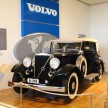




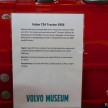


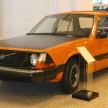
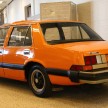

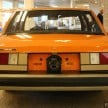

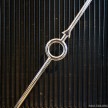
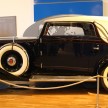
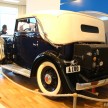





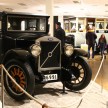

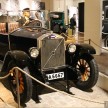
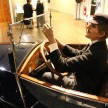
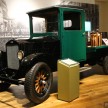
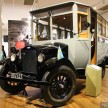
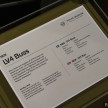
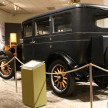
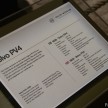


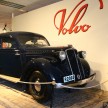

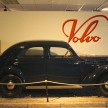

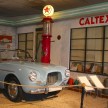

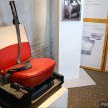


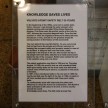
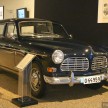


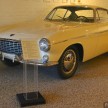
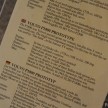
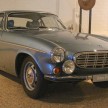

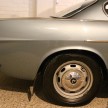
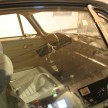
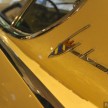

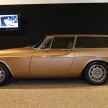
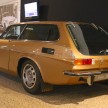
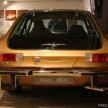
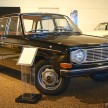
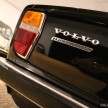
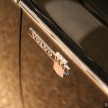

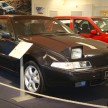
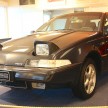
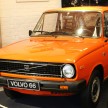
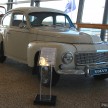

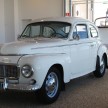
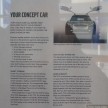









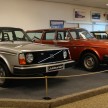
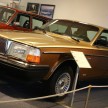
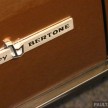


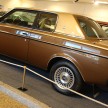
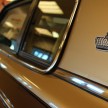

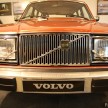




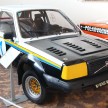


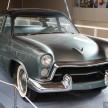






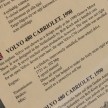
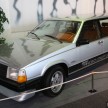




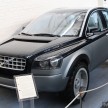
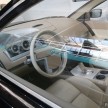
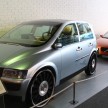










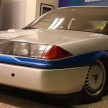



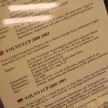

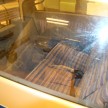
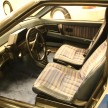
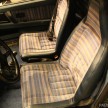
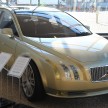
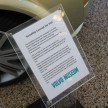

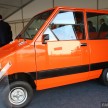


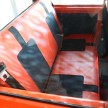














Volvo, Swedish pride. Proton, Malaysian pride. Volvo and Proton both are capable produde 5 star rating safe car.
Volvo, Swedish pride, owned by Chinese
its Chinese pride now. Volvo now and Volvo 244GL completely different. Now the new Volvos have 100% Chinese parts. Go and see for yourself. Even the windscreen got words Made in China.
Malaysians are silly to pay RM300k for a Geely in disguise.
Errr just checked my car. It says Pilkington for the front and rear and the sides Saint-Gobain Sekurit. And for those who are interested the front cost RM4500 to replace and the back RM7000+ because of the telephone and radio imprinted antennas.
Interesting though my F30 says Fuyao for the sides.
Swedish name, China quality.
And an idiotnonono in the making
I like how paultan.org has been doing these ‘museum showcase’ articles/ albums, it’s not something that Malaysian media tend to stress. The only local car portals that (used to) stress automotive history are Motor Trader/ Autoworld, more specifically, Chips Yap’s articles. They are such a joy to read.
I hope paultan.org can continue making more museum showcases like this. The Nissan one was great too.
And for the record, my most favourite Volvo will always be the 240. Still the quintessential box on wheels. haha
Mana iconic 240 aka The Tank?
Thanks Chris, well done on the coverage. I jelly lol.
Volvo has built a great brand, worldwide it has a great reputation as a safe, reliable, comfortable car. It can be fast too, quite extensive use of turbo, 850 R is legendary.
“For life” tagline sometime ridiculed, but it makes great car, who cares? RV becomes irrelevant, many can attest to that. They’ll crash, walk away when other cars can’t protect as good, then buy another Volvo
Ugly cars
Sui Kwan Euro
It would have been nice to see some pictures of the Volvo ECC which is what the S40 II, S60I and S80I and II Volvo sedan models are based on.
I have been a Volvo driver since late 1966. Started with a 122 Wagon, had a 164; 145; two 245; two V-70 XC’s, A XC 2008, a V-90 made in 1998 (same as 960); currently have a 2015 and a half FWD XC; and a small collection: 1956 444; 1960 544; 1967 122; 1968 122 wagon; 1960 P-1800; 1968 142; 1969 164; 1968 123GT (Canandian version); 1974 1800 ES; 89 480 turbo. The oldies are fun to drive, and are still running, they are not trailer queens!
Only complaint is fuel mileage. My 1956 gets around 20 MPG +/-; about the same as all the rest, except 164 is about 15 MPG; and the 2015 is mid to upper 20’s.